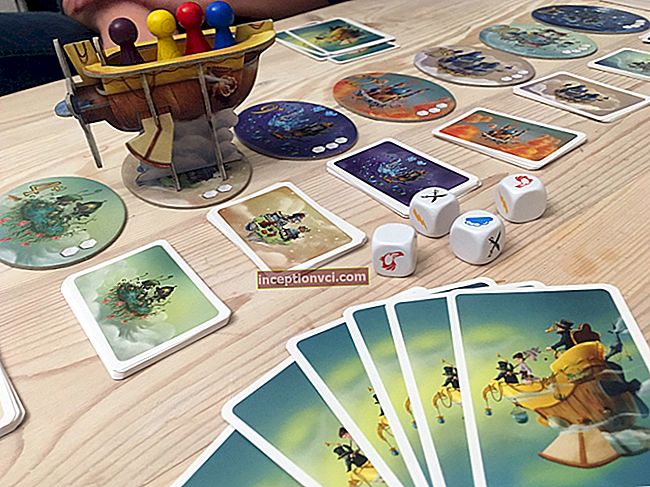General history of the invention of shakes and cocktails.
And in the cheapest bar eatery, and in a self-respecting restaurant, you will certainly be offered a list of branded drinks, in which you will surely come across the name "cocktail". The beautiful names listed in the restaurant's menu cannot but amaze the client, but one should remember a simple truth - not everything that is poured into a glass or glass can at least approximately be called a cocktail. Even in Ancient China, about three thousand years ago, mixed multicomponent drinks were used, while most often they were chilled mixtures of berry juices (which is remarkable, sometimes they were already pretty fermented). A little later, the Europeans also learned to mix juices, wines, and what is now called "compote". However, the first real cocktails appeared along with the emergence of a new culture of drinking and a certain stage of social and economic development of society. All this contributed to the emergence of cocktail recipes in various parts of Western civilization. Today, it is possible to argue about which of the linguistic tales or beautiful legends is closer to the truth only over a glass of some cocktail. However, in all these stories that have survived to this day, there is a place for worldly wisdom, and for romance, and for historical embellishments.
The first and one of the most romantic legends dates back to the eighteenth century. Around 1770, some of the local thieves robbed a pantry on the outskirts of New York, it belonged to an army bar. It cannot be said that the damage was very great, but the thieves managed to look into the chicken coop of this eatery. The owner of this tavern, an inveterate patriot of his homeland, a retired military man, in addition to his bar business, was very fond of cockfighting. It's not hard to imagine his disappointment and anger when, in addition to stealing from a bar, he noticed the absence of his only cock. Emotional, he turned to his clients with the following proposal: “Everything - for the tail of my cock!”. This "everything", as it should be in fairy tales, included the hand of a dear daughter and half of the tavern. The rooster was found surprisingly quickly. The thief, having heard about gorgeous promises, or simply felt responsible for the fate of the beauty, hurried to contact a young junior officer from an army unit stationed in New York (according to another version, it was the military police). Further, the legend says that it was this junior officer who passionately, sincerely, and most importantly, mutually loved the daughter of our innkeeper. This light feeling was hindered only by the mercantile thoughts of the owner at the expense of a more profitable marriage of his daughter. Having bought the rooster, this young man proudly headed to the tavern. In the presence of all the customers who had gathered in the bar at this time, the officer announced that he intends to marry a young beauty. The innkeeper's daughter was so worried that, mixing up the glasses, she mixed a completely incomprehensible mash of different drinks. The owner of the tavern, overjoyed at the return of his champion rooster, and having already resigned himself to the upcoming, albeit not as profitable, wedding as he expected, announced a free glass to all those present and a signature toast "To the cock's tail!" The "mash" of drinks, which the girl poured into glasses, did not taste so bad. The resulting drink was immediately dubbed "cock's tail", and in English transcription it sounds like "cocktail".

As you can imagine, there is more than one story. Another legend says that allegedly French winemakers, even before the fifteenth century, in the province of Charente, learned to cheat.This consisted in the fact that they mixed cheap and expensive grape wines in such a way that the deterioration in taste was minimal, and the volume and shelf life of the sparkling drink significantly increased. These wines in the official sale were cheaper and had a special mark coque-telque, with the already painfully familiar transcription [koki-e-telk].
During the colonization of America, these drinks penetrated the continent. Their import is associated with a general named Lafayette. They say that he saved a little in 1777, when he bought for soldiers and officers a significant batch of "homeland mines" in the colonies of the New World. In turn, there they were even more diluted by local bartenders and tavern owners, which turned these drinks into ordinary swill and provoked such a common name.
All on the same topic of dilution, there is another version, which claims that prim lovers of cockfighting in England and the New World have invented a new way to "provoke" cocks before the start of the fight. The unfortunate birds were fed an unusual mixture of grain, which was soaked in a cocktail of pretty sour wine and whiskey (please do not repeat or taste this poison!). After such a drink, the roosters resembled cats after the valerian and rushed into battle with everything that moved. The people who considered cockfighting without rules to be the main and most democratic entertainment and sweepstakes, compensated for the lack of bets with cheap alcoholic drinks of approximately the same nightmarish quality. Then cocktails were called people who got drunk to the point of disgrace at cockfights, and later this word stuck with the drink itself.

In aristocratic English at about the same time, this word entered to designate horses of not pure breed ("cock-teid") at the races: "their tails stuck up like a cock! In the blood they are mixed, as if in a mug in a cheap pub! ”, As historians of royal horse racing in Britain noted in 1796.
If we rely on the information of experts in the field of the history of culinary recipes, we can conclude that most of the names came from the previously accepted norms of volume, weight
If you ask experts in the history of culinary recipes, they will definitely point out to you that in a number of cases the name of dishes and drinks came from the name of previously accepted norms of weight, volume, names of glasses and the actual plates. The cocktail case is no exception. Historians confirm that in 1875 a certain New Orleans Frenchman Peixo (according to various versions a pharmacist, military man, bartender) treated visitors from glasses - coquetier in his bar. In Old French, this word means a special glass for eggs or potion glass. The simplification of the pronunciation of French abracadabra in the English manner led to the emergence of the modern transcription of the word.

The Spanish language cannot be ignored either. "Cola di gallo" - already well known to us "rooster's tail", is the name of the root of a plant that grows on the shores of the Gulf of Mexico and resembles the tail of a rather large rooster. American sailors, who at that time did not neglect other than sea travel, and bar travel, may have wondered what an amazing tool the locals were for whipping and mixing drinks. This strange thing could well be cola di gallo, because wood does not distort the taste of the drink at all. Since the sailors were English speaking, they were provided with an English translation that sounds like "cocktail".
There is another, perhaps the most incredible story, and it is associated with the state of Virginia and Betsy Flenaghan. The writer James Cooper mentioned this story in his adventure novel. And this is what this legend says. They say that Betsy served the soldier a drink of all the colors of the rainbow, or rather, all the colors that are on the rooster's tail. There is an assumption that the composition of this wonderful drink was as follows: rye whiskey + rum + fruit juices. When the soldier tasted the drink, he immediately exclaimed: “What a cocktail! What a cock's tail! "The rest of the soldiers picked up this phrase. Since then, the townspeople of the town of Flan consider their city to be the world capital of the cocktail business.

There are many legends and stories. But the first actual mention of the word "cocktail" in the sense in which it is familiar to us, took place in The Balance and Columbian Repository in 1806. There it was about liqueurs, which contain any alcoholic drink with the addition of water, sugar, bitter herbal tincture. Non-alcoholic tonic, sweet, fruity alcoholic drinks are already achievements of our time. New items and modernized old versions came to the menus of bars and restaurants after the end of the First World War. There is an opinion that the distribution of cocktails is due to Prohibition in America (1919-1933), when strong alcohol needed a harmless disguise.
Experts say that alcohol-free cocktails in the USSR initially appeared in the Stalin era (here the personal attachment of the leader to vitamin herbal alcoholic drinks played a role). But for ordinary citizens, this trend reached around the 70s.

In Russia and Ukraine, the accepted division of cocktails into long - "long drink" (low alcohol, with 3 or more components and the obligatory content of lemonade, cola or other non-alcoholic drinks) and "short drink" - short (alcoholic strong cocktails) has not taken root.
So a short excursion into the history of cocktails has come to an end. And the choice “What? With what? And in what proportions? " mixing is always yours. Dishes for serving cocktails are very important. Make a surprise for your beloved (beloved), prepare a cocktail at home. And a beautiful presentation will help F.ua.










